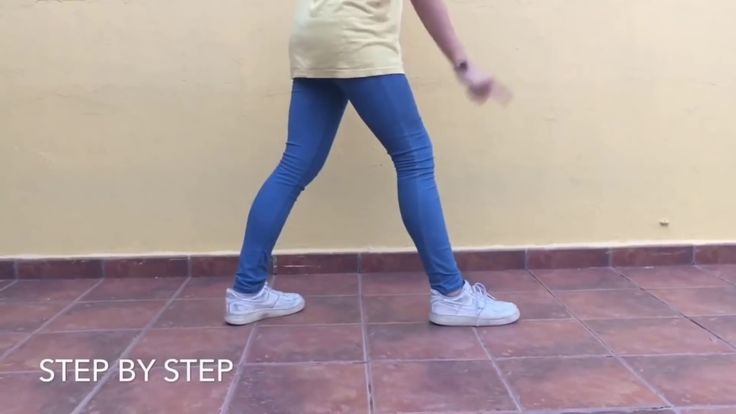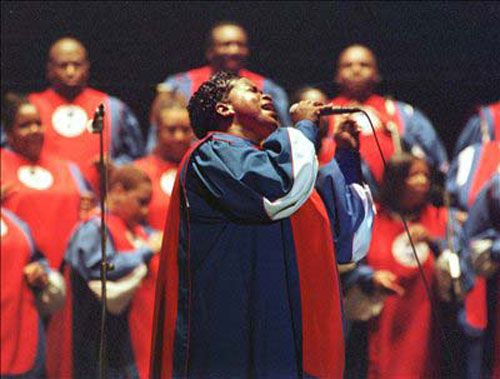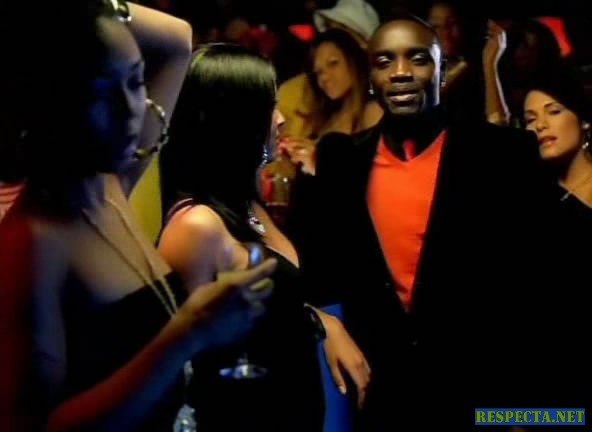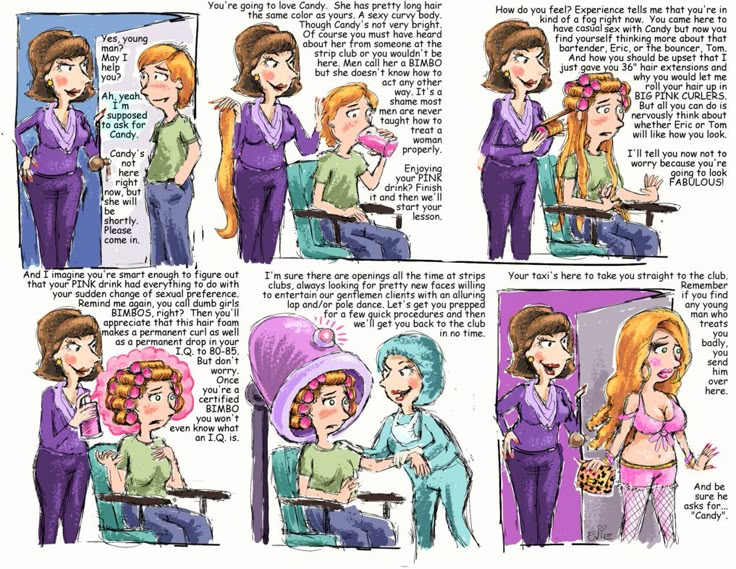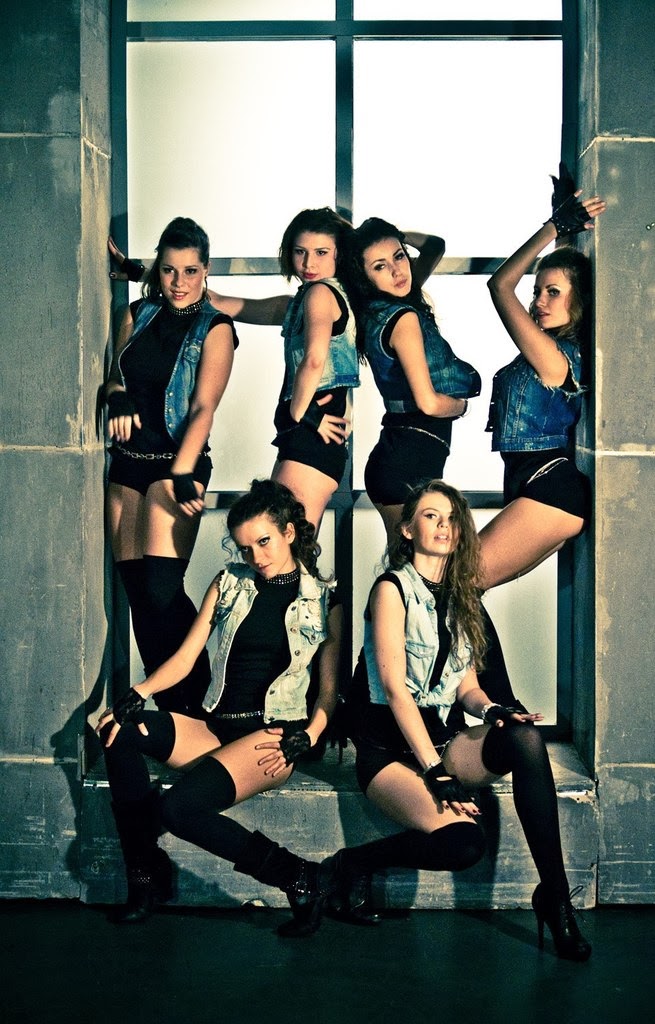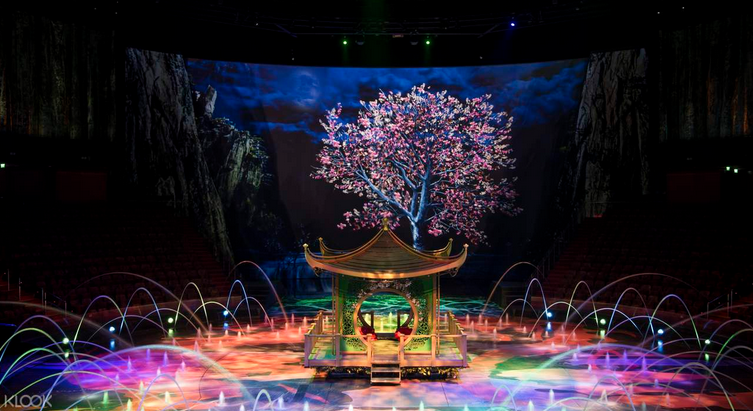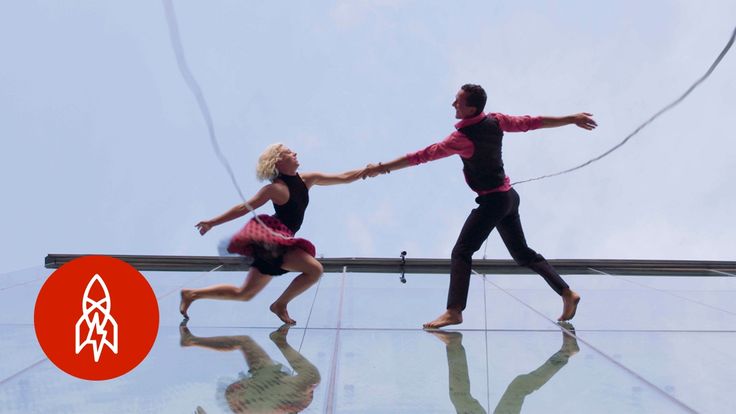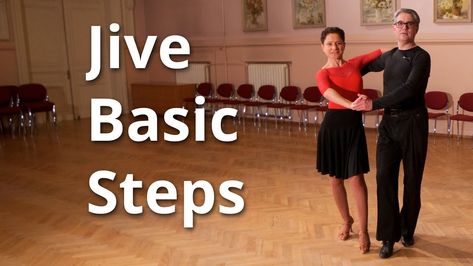How to shuffle dance tutorial
What Is The Shuffle Dance? Learn How To Do It In 5 Minutes!
In the recent years, we’ve seen a lot of EDM fans show off this weird, and somewhat new, dance move in a lot of music videos, throughout the web and on Youtube in their own personal videos. It seems like you are missing out on a lot of fun when you’re not sure what it’s all about and how to do it.
At first sight, it seems like the person is running while smiling and having a good time. To dance music fans, shuffling is more than just having a good time. As with most things EDM-related, it is a form of self expression, an accomplishment, and as some put it “a way to improve their mental and physical health”.
The Shuffle dance was developed in the 1980s, it is improvised dancing where the person repeatedly “shuffles” the feet inwards, then outwards, while thrusting their arms up and down, or side to side, in time with the beat.
Let’s go into more details and learn more about the dance and find out how you can start dancing it in 5 minutes!
Where did it start?
The Shuffling dance started in Melbourne, Australia, in the underground rave scene back in the early 1980s. Back then, it was known as the Melbourne Shuffle. With the growth of the electronic dance music scene around the world, Shuffling dance popularity grew and is now practiced by people from around the world at all the major EDM festivals. In 2012, the Melbourne Shuffle became a popular dance in the UK and became known as simply “The Shuffle”.
The Best Music For Shuffling
Melbourne’s underground scene in the early 90s was under the huge influence of Techno music. This high-BPM electronic music sub-genre placed the perfect beat for shuffle dancers. But shuffling became so popular that it crossed over into electro house and hardstyle genres. Today, shuffling spans into almost the full spectrum of electronic dance music. We’ve seen shuffling in videos from EDM, Trance, House, Techno, Electro and most of it’s sub-genres.
The best music for Shuffling is usually the more upbeat versions of electronic music. Although any EDM genre will work for the dance. Which makes Shuffling a very versatile dancing style: you can choose whatever music you want to dance on. There’s no limit to how much you can personalize this dance.
There’s no limit to how much you can personalize this dance.
Check out this Spotify playlist for music to Shuffle dance on.
Shuffling For Beginners
As a beginner, you have to learn to master just two basic moves before moving on to the more advanced stuff.
The first image below shows the T-step movement. The second is the same T-step combined with a variation of the running man dance. You can take a closer look at the dance by watching it being performed by Janet Jackson in the video of her hit “Rhythm Nation”.
A great tip you can keep in mind as beginners is that you can sprinkle talcum powder or add liquid to the floor to help you slide more smoothly and easily.
After mastering the basic shuffle moves you can now throw in some jumps, spins and slides. You’ll make the dance your own, having a complete shuffle routine that’s personalized and unique to you alone. After that, all you need is some awesome EDM banging music blasting through your speakers and let the fun begin!
Time To Learn How To Shuffle
Learning how to shuffle might seem like a difficult task, but it really isn’t!
When you take it slow, understand the steps and practice, you’ll be ready to hit the dance floor in no time!
As we previously mentioned, you’ll be starting out by learning the basic “running man” move. With time, you’ll be able to switch things up and add your unique twists to the overall dance. Hell, you might end up having a unique dance for every song, you’ll become the unstoppable Shuffle Master! Sounds awesome no?
With time, you’ll be able to switch things up and add your unique twists to the overall dance. Hell, you might end up having a unique dance for every song, you’ll become the unstoppable Shuffle Master! Sounds awesome no?
In the below tutorial video, you will learn the basics of Running Man. You’ll start by breaking down the steps easily and after that we put the steps to the counts and then to the music.
When getting started, keep these tips in mind:
1. Start slow – learn and practice the basics over a period of time
2. Dance in front of a mirror to better see what you’re doing
3. Copy the experts: watch Youtube videos to see how others are doing it
4. Wear good shoes and socks (or your feet will hurt like hell!)
5. Start slow, use slower BPM tracks such as deep house at first to get the hang of it first
6. Find people who already have mastered the dance and become friends, they’ll give you tips and tricks from their own experience
And most importantly, DON’T GIVE UP! Like everything in life, this will take it’s time to master and will need practice time, even though it looks easy in the videos.
Here Are Some Advanced Moves
The Kick Side Step:
The Charleston Shuffle:
Club Dance Footwork Moves:
Are There Any Benefits To Shuffling?
Shuffling, as you might have already discovered by now, is a lot of work. Your legs are moving, your hands are moving and your whole body is balancing itself throughout. You will be sweating in out when you shuffle, that’s almost a guarantee. But consider it a workout. Throughout the years, fitness experts and clubs have promoted dancing to music as a sort of exercise regime.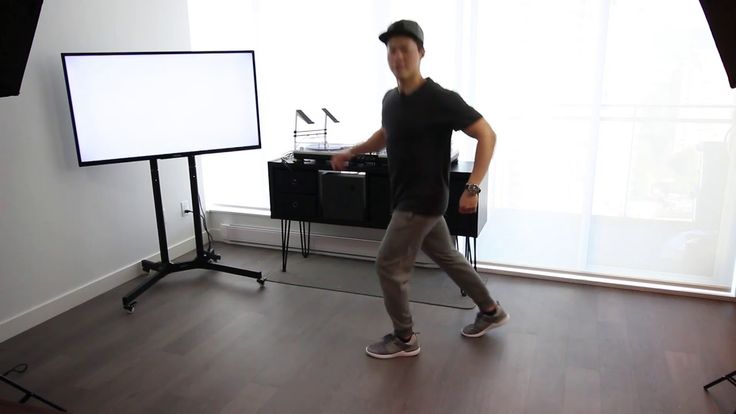 And it is! Nowadays, shuffling falls into that category.
And it is! Nowadays, shuffling falls into that category.
During a shuffling dance, your full body is moving and shaking. Burning around 500-1,500 calories an hour. Your leg muscles, calves, and glutes (and behind area) are getting toned with every passing minute, in addition to the toning of your abdominal muscles, with every twist and turn. Your legs get a serious focus, in addition to the muscles being stretched and toned, the joints and ligaments in your legs are getting some much needed attention. They’re getting extra strength with every active move.
But shuffling not only improves physical health. It can do wonders to your mental health as well. Similar to other physical workouts, shuffling releases endorphins into your nervous system. These are the anti-stress hormones, and the longer you shuffle, the longer they’ll stay in your system and the more stress and anxiety goes out of your way.Shuffling also improves mental focus, you’re in your zone trying to keep the rhythm going and focused on your moves, being in this mindful state is very beneficial to you. Once you’re in your rhythm and going about your dance, the success of every move will boost your confidence levels and keep you away from the everyday stresses of our lives. You’ll have a great sense of accomplishment after a successful streak. One dance will create a momentum in you to keep on going and try the more complex moves and get out of your comfort zone.
Once you’re in your rhythm and going about your dance, the success of every move will boost your confidence levels and keep you away from the everyday stresses of our lives. You’ll have a great sense of accomplishment after a successful streak. One dance will create a momentum in you to keep on going and try the more complex moves and get out of your comfort zone.
Speaking of “zones” being focused on your body movements will also bring you closer to the music. This deeper appreciation for the melodies and the detailed undertones of the track adds a special bond between you and your favorite artists.
There’s a whole community of Shuffle dancers out there. With the above knowledge and some time to practice, you’ll join them on the dance floor and you’ll be showing those awesome moves at the next EDM festival in no time!
Want more? Learn how to grind dance in minutes, go to our article right here.
Read More on EDM Festival Insider:
Master TikTok's Shuffle Dance in 4 Steps « Smartphones :: Gadget Hacks
- By Jake Peterson
- Social Media
- TikTok 101
What's the latest dance trend sweeping TikTok? The Shuffle Dance. If you just watch people doing the Shuffle Dance, especially the really good ones, you might think it's a bit complicated. In reality, it's really not that hard. It's just a handful of steps.
For the uninitiated, the Shuffle Dance is a fast-paced dance where you skip and hop in place. It's almost always set to "Friendships" by Pascal Letoublon, but not using any of the official tracks available via a TikTok search. You need to use the portion of the song that user rawston_ extracted and uploaded to TikTok. If you're going to post one of your own for this dance challenge, use that as the background music.
You need to use the portion of the song that user rawston_ extracted and uploaded to TikTok. If you're going to post one of your own for this dance challenge, use that as the background music.
As for the moves, all you need to do to master the Shuffle Dance is watch some good tutorials. Luckily, TikTok is full of them. Because it's so easy for TikTok users to add text to their videos, many of these tutorials have clear instructions for what you need to do in each step. The dance does differ depending on who you watch, however, so let's look at a couple of examples below.
- Don't Miss: Learn TikTok's 'Renegade' Dance in 20 Seconds
First up, fitnfesty. Her tutorial features four key steps:
- Make a triangle with your legs apart
- Bring back leg up, drag front leg halfway
- Drop leg that's up, drag other leg to the back
- Rock back and forth
@fitnfestyAnotha one #footwork #shuffle #runningman #shuffledance #dance #footworkchallange #shuffletutorial #fyp #footworktutorial
♬ 原聲 - wtb73d05h6
Next up, sammysteads. Her tutorial is actually more like three steps since you start with two counts of the same move:
- Start with two counts of the running man
- Whip your leg in front of you about knee high
- Now whip the same leg behind
@sammysteads#shuffletutorial #shuffledance #footworkchallenge #footworktutorial #dancetutorial #dancing #dancingchallenge #fyp #foryoupage #4yp
♬ 原聲 - wtb73d05h6
Finally, we like Smitty__Shuffles's Shuffle Dance tutorial, even though there aren't any written steps involved. His dance is like sammysteads' but with both legs instead of one:
His dance is like sammysteads' but with both legs instead of one:
- Cross right leg in front of the left
- Bring right leg back, stick it out away from you
- Hop, bringing the right leg behind the left
- Cross your left leg back, then bring it behind your right leg
@smitty_shufflesHaven't done a tutorial in a bit so here's another one for you guys! 👀👀 #duetthis #fyp #4u #foryou #dance #shuffle #shuffledance #tutorial
♬ 原聲 - wtb73d05h6
Don't Miss: Download Any TikTok Video on Your Phone — Even if They're Blocked from Saving
Keep Your Connection Secure Without a Monthly Bill. Get a lifetime subscription to VPN Unlimited for all your devices with a one-time purchase from the new Gadget Hacks Shop, and watch Hulu or Netflix without regional restrictions, increase security when browsing on public networks, and more.
Get a lifetime subscription to VPN Unlimited for all your devices with a one-time purchase from the new Gadget Hacks Shop, and watch Hulu or Netflix without regional restrictions, increase security when browsing on public networks, and more.
Buy Now (80% off) >
Other worthwhile deals to check out:
- 41% off a home Wi-Fi analyzer
- 98% off a learn to code bundle
- 98% off an accounting bootcamp
- 59% off the XSplit VCam video background editor
- Hot
- Latest
Dance Cotillions, Waltzes | Crystal Castle
Introduction
The history of the cotillon as an independent dance begins at the beginning of the 19th century, when all the balls were conquered by the waltz. The word Cotillion can be translated from French as “skirt”, and therefore many authors of the late 19th century claimed that this dance was invented by the French in honor of the beautiful half of humanity [1]. However, the word cotillon also meant a circular construction in country dances [2]. Apparently, it is from the country dances, in some of which the first pairs of obligatory figures were allowed to be chosen [3], that the cotillion originates.
However, the word cotillon also meant a circular construction in country dances [2]. Apparently, it is from the country dances, in some of which the first pairs of obligatory figures were allowed to be chosen [3], that the cotillion originates.
It is essentially a dance game. This basic essence of the cotillion has not changed over time, only the tastes of the public have changed regarding individual figures and dances, the movements of which were used in the cotillion [4].
Cotillion has been loved since the 1920s. 19th century, and in the middle of the century it became the coda of the ball - the final performance of the participants in their favorite dances. By the end of the 19th century more popular was the cotillion with accessories [5].
Cotillion combined the movements of all dances. The most popular were the waltz, gallop and polka (in the second half of 19in.). Not a single cotillion could do without them. In the middle of the century, quadrille figures were often inserted into the cotillion, performed between the figures of choice, so that the cotillion was sometimes even called the quadrille cotillion, but at the beginning of the 20th century it was already considered an old dance and was used much less often [6]. The attitude towards the mazurka was also ambiguous: some authors of dance manuals consider it the main dance of the cotillion and prescribe it to begin and end with the mazurka [7], others believe that the mazurka by its nature does not at all correspond to the cotillion and cannot be used in it [8].
The attitude towards the mazurka was also ambiguous: some authors of dance manuals consider it the main dance of the cotillion and prescribe it to begin and end with the mazurka [7], others believe that the mazurka by its nature does not at all correspond to the cotillion and cannot be used in it [8].
There were a great many figures in the cotillion. The most complete textbook that I was able to read included 125 figures [9], but I met references to a textbook containing 224 figures [10]. In general, the number of figures of the cotillion, as well as the waltz or the mazurka, was never strictly limited: there were as many of them as human imagination could create. Classifying figures is as difficult as counting. Only two types of division can be offered: a cotillion with accessories and a cotillon without accessories; and the division of figures into figures dominated by choice, figures dominated by play and purely dance-staged figures.
Explanations are needed for the first systematization. There are figures (most often purely dance ones), for the performance of which no objects are needed. For some of the figures, objects that are always at hand are used - scarves, fans, chairs, glasses of champagne. Some of the figures require special dance training - the presence in the hall for the cotillion of wreaths, small bows and arrows, balloons, national costumes, ribbons. Some of this could be found at all times in shops, shops, peddlers' stalls. The rest was produced by firms that specialized in this [11]. These things are called accessories. They became especially popular at the end of 19- the beginning of the 20th century. It was believed that this diversifies the dance and makes the cotillion in one house different from the cotillion in another. In fact, a strong passion for accessories largely emasculated the spirit of the game, because it either reduced most of the figures to a banal direct, monotonous choice of partners for a figure, or assumed complex structures with various symbols, not always harmonious and well chosen [12].
There are figures (most often purely dance ones), for the performance of which no objects are needed. For some of the figures, objects that are always at hand are used - scarves, fans, chairs, glasses of champagne. Some of the figures require special dance training - the presence in the hall for the cotillion of wreaths, small bows and arrows, balloons, national costumes, ribbons. Some of this could be found at all times in shops, shops, peddlers' stalls. The rest was produced by firms that specialized in this [11]. These things are called accessories. They became especially popular at the end of 19- the beginning of the 20th century. It was believed that this diversifies the dance and makes the cotillion in one house different from the cotillion in another. In fact, a strong passion for accessories largely emasculated the spirit of the game, because it either reduced most of the figures to a banal direct, monotonous choice of partners for a figure, or assumed complex structures with various symbols, not always harmonious and well chosen [12].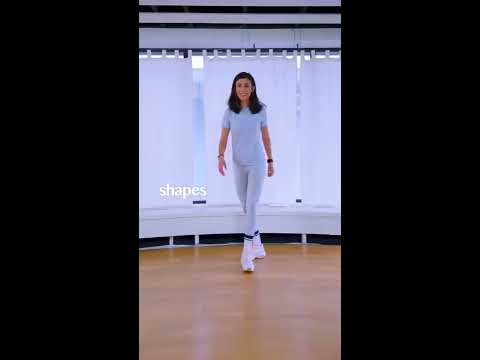 Perhaps that is why the cotillion gradually faded into the background at the beginning of the 20th century, and then completely disappeared from the ballroom programs.
Perhaps that is why the cotillion gradually faded into the background at the beginning of the 20th century, and then completely disappeared from the ballroom programs.
The second systematization is even more conditional than the first. The fact is that the choice of a random partner to one degree or another is found in almost all the figures of the cotillion. But in terms of figures, choice is the only thing that makes up a figure. In other figures, the choice of a random partner occurs during the game, and the game is more interesting than the choice itself, and the choice as a result is made by just one pair. In the third case, as a rule, the couples who started the dance invite additional gentlemen and ladies, and after that all the couples participating in the figure, both beginning and randomly composed, perform the whole figure, creating complex patterns of the arrangement of couples. Some figures include both building elements and game elements.
When performing a cotillion, one should not forget that this is not only a game, but also a dance, and quite a complicated one at that; and if at a ball it is offered for performance to an unprepared public, then such an attempt can easily fail.-Step-7.jpg/aid1640374-v4-728px-Shuffle-(Dance-Move)-Step-7.jpg) Another difficulty in using the cotillion at modern balls may be the psychological misunderstanding and rejection by the participants of the essence of the dance. Over the past hundred years, gender relations have changed a lot, and now the main idea of the cotillon - the random choice of a partner in each figure - no longer excites the blood as much as it used to. In addition, the cotillion is a long dance (the same figure is repeated in it until all the couples have performed it), and if Pushkin's Olga "endless cotillion tormented like a heavy dream", then modern man, accustomed to active actions, the more he will feel uncomfortable in the conditions of a long (two hour) dance, most of which he will have to sit, waiting for his turn. These points, of course, need to be taken into account when preparing a cotillion. If these difficulties are overcome, the cotillon turns out to be a very interesting dance.
Another difficulty in using the cotillion at modern balls may be the psychological misunderstanding and rejection by the participants of the essence of the dance. Over the past hundred years, gender relations have changed a lot, and now the main idea of the cotillon - the random choice of a partner in each figure - no longer excites the blood as much as it used to. In addition, the cotillion is a long dance (the same figure is repeated in it until all the couples have performed it), and if Pushkin's Olga "endless cotillion tormented like a heavy dream", then modern man, accustomed to active actions, the more he will feel uncomfortable in the conditions of a long (two hour) dance, most of which he will have to sit, waiting for his turn. These points, of course, need to be taken into account when preparing a cotillion. If these difficulties are overcome, the cotillon turns out to be a very interesting dance.
Rules for the performance of the cotillion
Before proceeding to the description of the sequence of the dance, I would like to note that several formal moments are very important for the cotillon, which in the 19th century. for the dancers were completely natural, but now little attention is paid to them (if any). This is who is whose constant partner for the entire duration of the dance and the place of each couple (the chairs on which they sit while waiting for their turn). The sequence of pairs is also important for the cotillion. So, if a couple starts the dance third, then in all the figures it will dance at number three.
for the dancers were completely natural, but now little attention is paid to them (if any). This is who is whose constant partner for the entire duration of the dance and the place of each couple (the chairs on which they sit while waiting for their turn). The sequence of pairs is also important for the cotillion. So, if a couple starts the dance third, then in all the figures it will dance at number three.
The order of the cotillion must be as follows. Before the start of the dance (and often a few days before the ball), a gentleman manager is elected or hired. Such a gentleman should choose as his lady the one for whom the ball is given - most often the birthday girl or the daughter of the owners. The gentleman manager and his lady become the first couple. It is from them that the order of the cotillion depends. The gentleman-manager offers figures for execution (sighting them from his lady), monitors the order of execution, drives those who hesitate, etc. If there are 24 couples or more at the ball, then the society can be divided into 2, 3, 4 or more groups according to 12-15 pairs in each. The first cavaliers of these groups (cavaliers of 13, 25, etc. pairs) become assistants to the cavalier-manager and monitor the execution of figures in their groups. But the sequence of figures for the whole society is set by the chief gentleman-manager.
The first cavaliers of these groups (cavaliers of 13, 25, etc. pairs) become assistants to the cavalier-manager and monitor the execution of figures in their groups. But the sequence of figures for the whole society is set by the chief gentleman-manager.
The beginning of the cotillion could be different. But the most common option was the following: all the couples in turn, starting from the first, did a waltz tour (or a mazurka promenade) around the entire hall. After that came the cotillon figures in random order, and after every two figures all the dancers performed a waltz or polka tour, a mazurka promenade, or one of the quadrille figures. After all the figures, the ending was danced. The variations of the endings were also different, but it always included all the dancing cotillons.
There were general rules for the execution of figures. As a rule, the figure began with a waltz tour (polka tour, mazurka promenade), performed by a certain number of couples (no more than eight). This round was danced by couples No. 1-(8), according to their numbers. After that, the couples elected new dancers, as many as needed to perform the figure. The figure ended with a general dance of all those participating in it. Then it was repeated again, in the following pairs, for example, if pairs No. 1-3 started for the first time, then Nos. 4-6 in the second, Nos. 7-9 in the thirdand so on until all couples are soloists. However, about some figures, where 1-2 couples solo, and the figure requires a long performance, dance textbooks said that they were repeated only once or twice so as not to delay the dance.
This round was danced by couples No. 1-(8), according to their numbers. After that, the couples elected new dancers, as many as needed to perform the figure. The figure ended with a general dance of all those participating in it. Then it was repeated again, in the following pairs, for example, if pairs No. 1-3 started for the first time, then Nos. 4-6 in the second, Nos. 7-9 in the thirdand so on until all couples are soloists. However, about some figures, where 1-2 couples solo, and the figure requires a long performance, dance textbooks said that they were repeated only once or twice so as not to delay the dance.
Cotillion figures
General list
12. Numeral 8 13. Deceived 14. Clapperboard 15. Battlefield 16. Threes 17. With fan 18. Initial greeting 19. Butterfly games 20. Weaving wreaths 21. Dreams of happiness 22. Gambling 23. Mutual favor 24. Pyramid 25. Glass of consolation 26. One of three 27. Poets 28. Change of ladies 29. Flowers 30. Transition 31. Bouquets 32. Ladies, Swapping Places 33. Instigator 34. Half Moon 35. Meeting 36. Lightning Movement 37. Next Chairs 38. Fortune Telling 39. Crashing Waves 40. Skating Rink 41. Balloon Tour 42. In Mousetrap 43. Slick Shooter 44. Cross of Ladies 45. Rural 46. Four-wheel mill 47. Journey 48. Crossing of ladies 49. Double windmill 50. Sign - 8 51. Threes 52. Tunnel 53. Double chain 54. Railway bridge 55. Shuffling cards 56. Soldering the chain 57. Labyrinth 58. Double cross 59. Invisibles 60. Conversation 61. Handkerchief 62. Cross of gentlemen 63 Tribute to beauty 64. Tribute to grace 65. Cat and mouse 66. Magpies 67. Violets 68. Chasers 69. Aprons 70. Bridge 71. Tour de dames 72. Mill IV 73. Wolf 74. Presentation of the ladies 75. Changing cross 76. Cross gentlemen and ladies
Bouquets 32. Ladies, Swapping Places 33. Instigator 34. Half Moon 35. Meeting 36. Lightning Movement 37. Next Chairs 38. Fortune Telling 39. Crashing Waves 40. Skating Rink 41. Balloon Tour 42. In Mousetrap 43. Slick Shooter 44. Cross of Ladies 45. Rural 46. Four-wheel mill 47. Journey 48. Crossing of ladies 49. Double windmill 50. Sign - 8 51. Threes 52. Tunnel 53. Double chain 54. Railway bridge 55. Shuffling cards 56. Soldering the chain 57. Labyrinth 58. Double cross 59. Invisibles 60. Conversation 61. Handkerchief 62. Cross of gentlemen 63 Tribute to beauty 64. Tribute to grace 65. Cat and mouse 66. Magpies 67. Violets 68. Chasers 69. Aprons 70. Bridge 71. Tour de dames 72. Mill IV 73. Wolf 74. Presentation of the ladies 75. Changing cross 76. Cross gentlemen and ladies
Class hour presentation on the topic "Movement is life"
BUDGET PROFESSIONAL EDUCATIONAL INSTITUTION OF THE REPUBLIC OF CRIMEA
“Kerch Technological College”
thematic thematic thematic thematic class hour
“Movement is life"
Teacher of additional education Muhladi A. M.
M.
2012
Studying the features of raising children by art choreography.
Event form: musical living room.
Equipment : slides; musical accompaniment; epidiascope; a computer.
1. The birth of the art of dance.
2. The role of choreographic art in the education of children.
3. A little about the most spectacular sport.
4. Interesting facts about dancing.
5. Dance therapy.
I part
1 master.
DANCE - rhythmic, expressive body movements, usually arranged in
certain composition and performed with musical accompaniment. Dance - perhaps the oldest of the arts; it reflects going back to the earliest times a person's need to convey to other people their joy or grief through your body. Dance originated from various movements and gestures related to work processes and emotional impressions of a person from the surrounding world. movements gradually subjected to artistic generalization, in as a result of which the art of dance was formed, one of the oldest expressions of folk art.
Original associated with the word and the song, the dance gradually acquired independent meaning.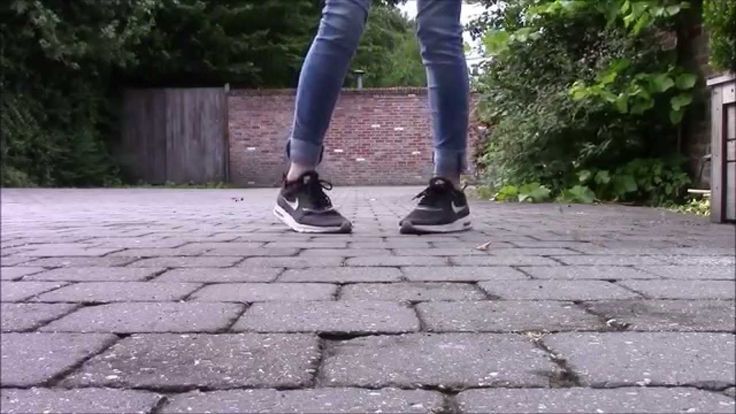 Almost all important events in the life of the primitive people were celebrated with dances: birth, death, war, election a new leader, healing the sick. Prayers for rain were danced, sunlight, fertility, protection and forgiveness.
Almost all important events in the life of the primitive people were celebrated with dances: birth, death, war, election a new leader, healing the sick. Prayers for rain were danced, sunlight, fertility, protection and forgiveness.
2 master .
Dance pa (fr. pas - "step") are derived from the basic forms
human movements - walking, running, jumping, jumping, jumping, sliding, turns and swings. Combinations of such movements gradually turned into pas of traditional dances. The main characteristics of the dance are: • Rhythm - relatively fast or - relatively slow repetition and
variation basic movements;
• drawing - a combination of movements in the composition; dynamics - variation
range and intensity of movements;
. technique - the degree of mastery of the body and skill in performing basic steps and positions. In many dances, gestures are also of great importance, especially
movements. hands
1 master.
Dance existed and exists in the cultural traditions of all human beings
beings and societies. Over the long history of mankind, it has changed, reflecting the cultural development. There is a huge variety of types, styles and forms of dance.
What kinds of dances do you know? Ballroom, historical and domestic, folk, variety, classical, oriental.
At present, choreographic art covers and traditional folk, and professional stage. Dance art is present in varying degrees, form in the culture of each ethnos, ethnic group. And this phenomenon cannot be an accident, it wears objective character, because traditional folk choreography occupies a paramount place in social life of society both in the early stages of human development, and now, when it performs one of the functions of culture, is one of the peculiar institutions of the socialization of people and especially children, adolescents and youth, and also performs a number of other functions inherent in culture as a whole.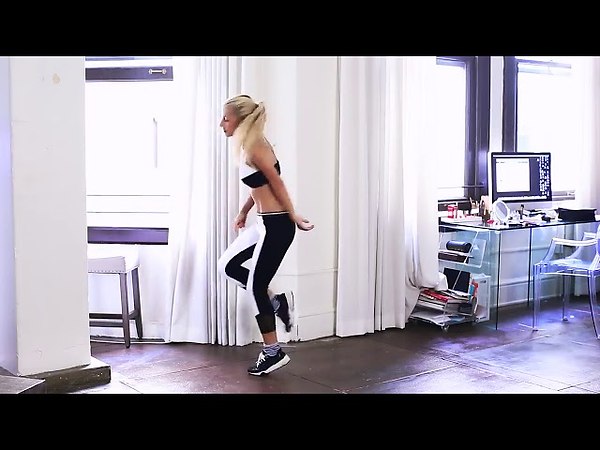
Dance “I draw this world”.
II part
1 master.
Choreographic Art has always attracted the attention of children. It has become widespread distribution in preschool institutions, secondary schools. It - provides a more complete development of the individual abilities of children, and therefore training in choreographic groups should be available significantly to a larger circle of children and adolescents. They are love the art of dance and attend classes for quite a for a long time, show perseverance and diligence in acquiring dance knowledge and skills.
Pedagogical the process is built in such a way that children, acquiring knowledge, mastering skills and abilities, at the same time would form their worldview, acquire the best views and character traits. Classes for dance contribute to the aesthetic education of children, have a positive impact on their physical development, contribute to the growth of their overall culture, therefore it can be argued that choreographic art has a rich opportunity for the broad implementation of educational tasks.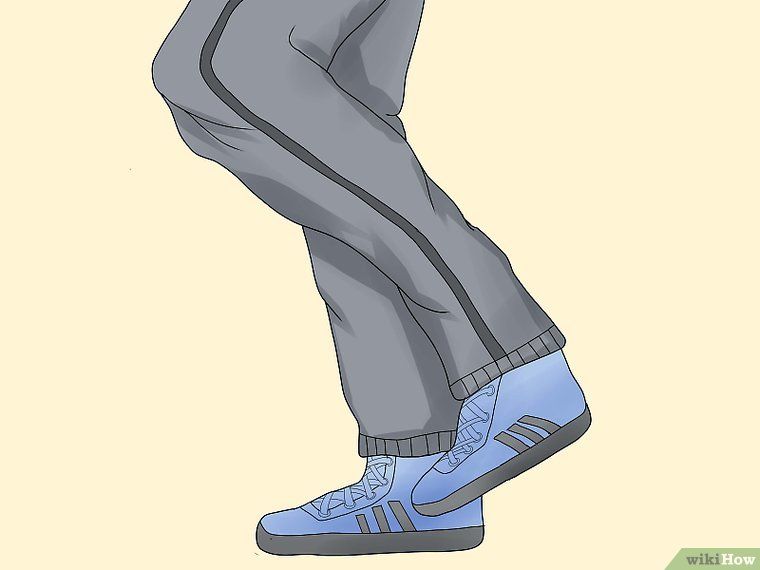
2 master .
Choreography - this is the world of the beauty of movement, sounds, light colors, costumes, that is, the world magical art. Children aspire to see this at ballet performances, in art albums, videos.
B choreography lessons become mandatory in Russian education. They are educate and develop not only the artistic skills of performing dances of different genres, but also the development of habits and norms of behavior in accordance with comprehended laws beauty.
Classes choreographic art contribute to the physical development of children and enrich them spiritually. This harmonious activity attracts both children and parents. A child who owns a ballet posture delights surrounding. But its formation is a long process, requiring many qualities from children.
1 master.
Discipline, diligence and patience are those character traits that are necessary not only in the choreographic class, but also in everyday life. These qualities are brought up by choreographers for years and determine success in many cases. A sense of responsibility, so necessary in life, moves children involved in choreography, forward. You can not bring the person standing next to you dance, you can't be late, because others depend on you, impossible not to learn, not to perform, not to refine.
These qualities are brought up by choreographers for years and determine success in many cases. A sense of responsibility, so necessary in life, moves children involved in choreography, forward. You can not bring the person standing next to you dance, you can't be late, because others depend on you, impossible not to learn, not to perform, not to refine.
Neatness in choreographic performance, neatness of form in the choreographic class carried over to the appearance of children at school. They stand out not only for their posture, but also hair, cleanliness and elegance of wearing the most ordinary clothes. Attention and concern for others is a necessary quality in the character of children, and choreography classes solve these problems. Choreographic art in a child is an addition and continuation of his real life, enriching it.
Dance "Russian dance".
III part.
1 master .
A now a bit about the most spectacular sport
Perhaps one of the most spectator sports are considered to be rhythmic gymnastics. Despite that this is an exclusively female sport, it has no less fans than any other sport. In the process of training, they form vital motor skills and abilities (applied and sports), special knowledge is acquired, moral and volitional qualities are brought up.
Despite that this is an exclusively female sport, it has no less fans than any other sport. In the process of training, they form vital motor skills and abilities (applied and sports), special knowledge is acquired, moral and volitional qualities are brought up.
Rhythmic gymnastics, type sports, women's competitions in performing combinations of various plastic and dynamic gymnastic and dance exercises art. n. object (ribbon, ball, hoop, rope, maces) and without it.
2 master.
An important place in the artistic Gymnastics is occupied by such art forms as dance and music. musical accompaniment develops an ear for music, a sense of rhythm, consistency movements with music. Elements of dance expand the general horizons of those involved, acquaint with folk art; develop in them a love for the art of their people, peoples of the world. They contribute to the development of coordination of movements, dance, rhythm, emancipation, emotionality, improvement of motor qualities.
Main artistic gymnastics is used for the purpose of comprehensive, harmonic physical development, health promotion and improvement of motor functions, posture involved. Her means (dances, games to music, exercises without an object and with objects) are used in kindergartens, general educational schools, secondary and higher educational institutions.
1 leading .
Applied art gymnastics is used in the preparation of athletes in other sports (in gymnastics, acrobatics, figure skating, synchronized swimming), and also in the training of ballet and circus artists. Her means are elements of dancing, exercises for relaxation, waves, swings, jumps, turns, etc. Very popular in in our country and abroad enjoys rhythmic gymnastics with sports orientation.
Rhythmic gymnastics as The sport for women has evolved over the years. .
2 master .
Significant contribution to scientific the rationale for the physical education of girls was introduced by a French physiologist and teacher Georges Demeny (1850 - 1917). He proved the feasibility of using dynamic exercises, stretching and muscle relaxation exercises, dance steps, exercises with objects (maces, sticks, wreaths, etc.), contributing to the acquisition of flexibility, dexterity, good posture, the ability to move smoothly and gracefully.
He proved the feasibility of using dynamic exercises, stretching and muscle relaxation exercises, dance steps, exercises with objects (maces, sticks, wreaths, etc.), contributing to the acquisition of flexibility, dexterity, good posture, the ability to move smoothly and gracefully.
1 master .
Actually, the most optimal an option is to do rhythmic gymnastics, one of the types of dances. Although such a combination is far from being possible for everyone, it still remains one of the essential conditions for success.
And one more thing. Very important develop creativity and creative thinking. It will help later You and your coach to create extraordinary and original numbers, that is something completely new that will undoubtedly succeed.
Dance "Perpetual Motion".
IV part.
1 master.
Do you know?
1. Attending a dance club at least twice a week reduces the risk dementia.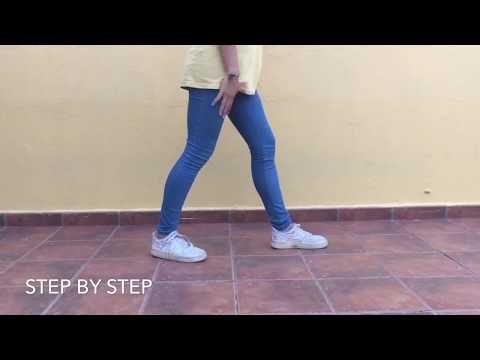
2. Dancing children have 5% stronger bones than couch potatoes and couch potatoes.
2 master.
3. Tango - spread from African communities in Buones Aires. The word "Tango" is derived from the language of the Nigerian people Ibibio, where it meant dancing to the sound of a drum. Initially, the dance was danced only men seeking the attention of women.
1 master .
4. The dance "Cha-cha-cha" is called the "dance of coquettes" because it characterized by expressive movement of the hips.
2 master .
5. Dance "Polka" of Czech origin.
1 master .
6. Waltz - got its origin in the old folk dances of Austria, and Southern Germany. It means to revolve, to spin.
2 master .
1 leader.
7. That belly dancing was brought to the Middle East by gypsies from India around the 10th century. There are more than 50 types of oriental dance
2 leader.
8. Scientists conducted experiments on diseased hearts. At the dancers the amount of oxygen in the blood increased by 18%, and in athletes only by 16%.
1 master .
9. Professional dancers don't get Parkinson's disease.
2 master .
10. In classical Indian dance, in order to portray feelings are involved not only eyes, but also eyebrows, lips, nose, cheeks, chin and ears. This is a great exercise for facial muscles.
1 master .
11. Brush, flap, shuffle, ball wind and convulsions, this is not at all the delirium of a madman, but the techniques of the tap dance.
2 master.
12. The Sirtaki dance is not a Greek folk dance, it was created especially for the film "Zorba the Greek" at 1964 year. After the release of the film, the dance became very popular all over the world, and has become one of the symbols of Greece.
Sirtaki dance.
V part.
1 master.
Dancing is very exciting and pleasant treatment. It is especially useful to dance for those who hold negative emotions in yourself. Dance therapy perfectly removes depression, helps to cope with many serious psychological problems. dance classes, dance therapy, develop coordination of movements and a sense of rhythm, contribute to the improvement muscle tone. Choreography classes improve metabolism, work respiratory, cardiovascular system, normalizes weight, improves well-being. Dancers are less likely to get colds For asthmatics, the course of the disease is facilitated, they are less likely to suffer from asthma attacks. Dance can also be considered as a prevention of osteoporosis, since the movements associated with By transferring the center of gravity, bones are strengthened. Theoretically, for any physical mobility-related disease, such as Parkinson's disease, movement can turn out to be useful. Physical symptoms associated with various types of stress, can also be removed by dance therapy.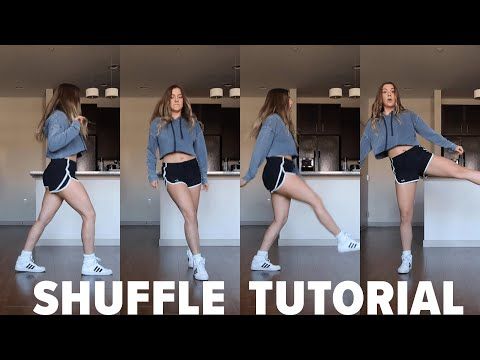
2 master.
What is dance therapy for?
ü For ability to control your body.
Figure becomes more beautiful and fit.
ü Dance therapy makes it possible to express deep subconscious feelings hidden in subconscious emotions. By pulling them to the surface, you can get rid of many complexes.
ü Dance therapy help to cope with stress, lift mood.
ü Dance relieves muscle pain, clamps, the mood will be cheerful.
ü Dance this is not a waste of energy, this is its accumulation. Dancing trains not only muscles, but in our brain, next to the areas responsible for motor function are areas responsible for emotions and intelligence. By dancing we stimulate emotions and intelligence.
ü Vo During dancing, happy hormones, endorphins, are produced. Statistically, dancers live longer and happier lives than their non-dancing peers.
1 master.
Development of therapy with dance began with the Second World War.-Step-6.jpg/aid1640374-v4-728px-Shuffle-(Dance-Move)-Step-6.jpg) Dance therapy was prescribed to people in need of physical and emotional rehabilitation, dance therapy is firmly strengthened its position in the early 60s of the last century. At its origins standing choreographers Rudolf von Laban and Mary Wigman.
Dance therapy was prescribed to people in need of physical and emotional rehabilitation, dance therapy is firmly strengthened its position in the early 60s of the last century. At its origins standing choreographers Rudolf von Laban and Mary Wigman.
Dance - this is a huge force that awakens creative energy!
2 master .
Medical advances and general rising living standards have led to the fact that humanity is rapidly "getting old". But science has proven that "eternal youth" is quite real. Here, as always, outstanding people of mankind are ahead, until declining years, striking contemporaries with their physical and mental opportunities. Goethe, Democritus, Tolstoy - the list goes on impressive size.
1 master .
But "eternal youth" is available to everyone! The science is working in this direction. However, there are already simple, effective and public methods. For example, engaging in any kind of creativity prolongs mental youth.